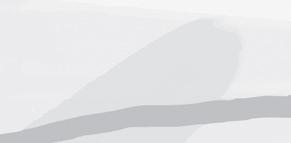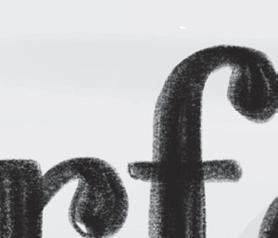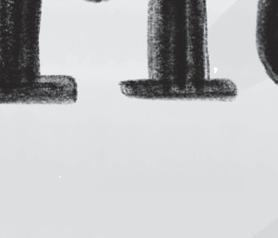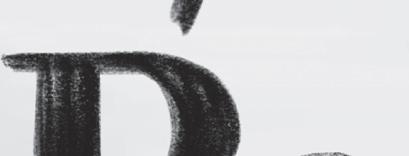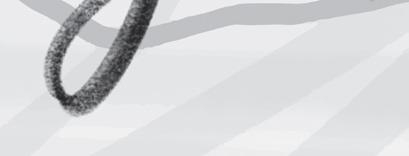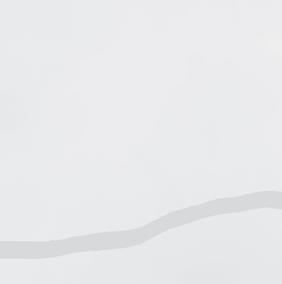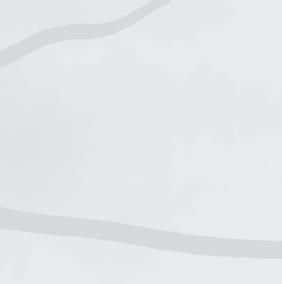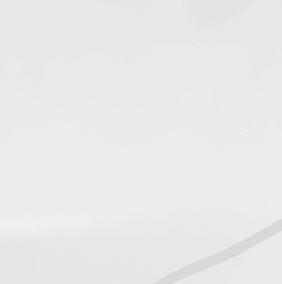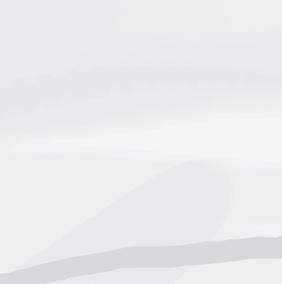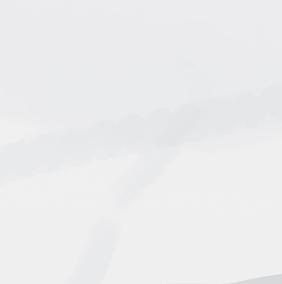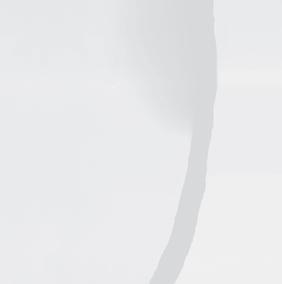Introduction Before We Begin
So you faced a setback or made a mistake. Or someone else had a win or got a piece of great news. And now that voice in your head is having a heyday. It’s reminding you that you failed, or that you’re way behind. That you are a failure. And everyone else is on top of their game.
So you try harder. You set bigger goals. You raise the bar on yourself. You pile even more on to your to-do list, even though you’re already burning out.
For a while, things look good. The desire to be in control is motivating. You secretly compare yourself to others and silently pat yourself on the back. The success, praise, approval, or productivity makes you feel good great. You’re addicted.
And then something happens. You get negative feedback. Maybe things don’t go as planned. Or someone else does better or looks happier. Or maybe the success or praise feels undeserving or not enough. You suddenly feel down. Maybe angry. Maybe ashamed.
You have no choice but to try harder. Because for competent and conscientious women, giving up is not an option.
Welcome to the emotional roller-coaster world of fragile confidence.
I was nearing my fortieth birthday when it struck me that life was passing me by, and I had yet to step fully into it. I’d been feeling this way for a while, but the daily grind of raising four kids while setting up a coaching business had kept me from paying close attention. Who has time, much less the energy, for the more soulful questions when getting through the day is its own ordeal?
Now that the kids were getting older and the business had taken off somewhat, I had time to think about the life I was living and the life I wanted to live.
The life I was living was full of shoulds and have tos. I should have more patience. I should’ve prepared better. I have to start a podcast if I want my business to grow. I felt I was on a treadmill, where the speed and incline only went one way: up. And all the running in the
GOODBYE, PERFECT viii
world didn’t get me any closer to the ease and joy I so desperately wanted to experience.
I wanted to be present in life’s journey, have time to laugh, notice the bird pecking outside my window, sit with my child, friend, or neighbor without worrying about the work I still had to do. I wanted to live with more grace but also more grit instead of doubting myself and comparing my coaching business with those who were making a bigger impact through their work. I loved what I did, but I kept stumbling over myself trying to get somewhere faster than I could go. And I was tired of the endless running.
When I turned forty, that dissonance suddenly was at the forefront of my mind. What was missing? Why was I stuck in this space of trying harder and harder yet feeling forever behind? What would bring me the joy and meaning I longed to experience, not just in fleeting moments but as a more lasting sense of fulfillment? What would help me occupy a bigger space in my own life?
COMMON PAINS
Around the time I was grappling with these questions, I could see my coaching clients struggling with much of the same. Women’s lives are, after all, woven through with the same threads. Our unfair share of challenges have raised our conscience. We long to grow into the best version of ourselves not to stoke the ego, but to leave the world a little better than we found it.
B e FO re W e B e GIN ix
The women I worked with knew something was missing from their lives, but they either didn’t quite know what it was or didn’t have the courage to pursue it wholeheartedly. There was ambivalence (I’m not sure if this is a good idea). There was self-doubt (I don’t think I can really do this). And there was a whole lot of selfcriticism; they’d beat down on themselves for knowing what to do and still not doing it or for doing it and falling short of some selfprescribed standard they knew was unreasonable.
One day, a client said to me, “My greatest wish right now is that I make a mistake and shrug it off with yeah, whatever. My sister does it all the time, but I just can’t. I don’t know what’s wrong with me.” I knew that voice of being “wrong” or “lacking” all too well. Despite having multiple coaching credentials, I still wondered whether I was good enough to be a coach. And these feelings came through not just in the conversations I had with my clients and how far I was willing to challenge toward their goals, but also in how comfortable I was charging appropriately for my services. It’s all too common for women to measure our worth through money and put a dismal price on it.
I knew that to help my clients experience the breakthroughs they wanted, I had to embody the courage I was expecting from them. They were competent, qualified, and successful women. No doubt, they faced many, many unfair barriers to their growth, and it was worse for women of color or those who identified with
GOODBYE, PERFECT x
other aspects of intersectionality. But all too often, it was their own expectations of themselves that seemed to cripple them. There was Priyanka, who was heading global operations at an international fintech company and in charge of decisions that impacted hundreds of people around the world. You would think her position would have given her the courage to take bold action. Instead, she said she constantly felt like a fraud. “I wake up every morning wanting to quit,” she said. “I feel I’ve had a good run, and I’d better walk away before I’m found out.”
Another highly successful client, who starred as the main character in a very popular TV show in the nineties, felt debilitated by similar feelings. Even though her career was long over, she continued to have a dream that had haunted her for decades. “I have this recurring nightmare. I’m on the set as [the character she played]. I’m in the midst of a very emotional scene when the director walks in and pulls off my hair wig. ‘You’re not [the character]’ he says. ‘The game is over.’ That’s when I always wake up in a sweat.”
Were we, as competent and conscientious women, destined to crawl our way to the top, only to be unhappy if or when we got there? I thought of many of the successful women I’d met and worked with in the developing countries I’d lived in for a large part of my life. They had grown up in cultures where they faced social, institutional, and interpersonal challenges that were far more repressive than the
B e FO re W e B e GIN xi
ones most of my clients or I were facing. As little girls, they’d been given a fraction of the education, experiences, and opportunities that most of us had received. As adults, they constantly came up against closed doors and systemic barriers enough to crush the most heartfelt ambition. But their grit was still intact.
I remember Mama Maggie, a Tanzanian tour guide I met when she visited my children’s school in Oman, where we were living at the time. I was infatuated by her infectious joy and the presence with which she listened to others. I was also in awe of her spirit; she ran the Dare Women’s Foundation, which she started to provide free sanitary pads to girls and women. As a child, she’d lived through the harrowing experience of being beaten by her teacher when her period had leaked because makeshift cloth pads was all they had in their village.
In her foundation, she also taught English to women so they could get better jobs. In the initial days, the men in the village would shout insults at her, attack her home and foundation, and do all they could to stop her. Instead of being fazed by the opposition, Mama Maggie’s dedication to her cause grew stronger every day, and she set about understanding the real reason the men were upset. When she found that it was the fear of losing control over their wives, she began educating them on the financial benefits of having dual incomes and how it would actually make them more in control of their lives.
GOODBYE, PERFECT xii
That was when I began becoming obsessed by this thought: What would it take for us to grow into the biggest version of ourselves without tormenting ourselves along the way? How could we experience more joy, more ease, more grace despite the challenges along the way? What did Mama Maggie and others like her have that the rest of us didn’t? Was it confidence? After all, it was the one quality every client wanted, regardless of why she came to me for coaching. Even the ones who seemed pretty self-assured would talk about their “crisis of confidence” when presented with a new challenge or when someone doubted their performance or intentions. Was confidence really the path to more joy, more success, more meaning, and a bigger impact in the world through our unique strengths and qualities?
I decided to find out.
TWO FORMS OF HIGH CONFIDENCE
I went back to graduate school to study positive psychology (the science of an actualized life) and coaching psychology (the science of helping people create real change in their lives). For my dissertation, I naturally chose to research women’s confidence with this question in mind: Does confidence lead to self-actualization?
I didn’t realize at the time what a conundrum I was stepping into. Confidence is one of the most contested fields of psychological study, with as many definitions as there are scientists studying
B e FO re W e B e GIN xiii
it. In the scientific literature, there’s no unified definition of what it is and how it develops. It’s been called self-esteem, self-worth, selfefficacy, self-care, self-compassion, and much else by those who study or teach it. Researchers disagree on where it comes from, how we build it, and whether it’s even a quality worth pursuing. The failed self-esteem movements of the 1970s brought to light an ugly side of confidence: narcissistic behaviors resulting from excessive coddling and praise because “everyone is a winner.”
My mission with the research became twofold:
1. Find a psychological definition of confidence that speaks to the needs, challenges, and aspirations of women in the twenty-first century.
2. Develop an evidence-based framework to build it so we can let go of the tyranny of striving harder and joyfully reach for our biggest lives.
Instrumental to my research was the scientific literature developed by the late Michael H. Kernis, whose work in social and personal psychology led him to coin two forms of high self- esteem: fragile self- esteem and optimal self- esteem . 1 Although they can sometimes look quite similar on the outside, the difference lies in the implicit sense we carry about our sense of self- worth.
GOODBYE, PERFECT xiv
In fragile confidence, the implicit sense is less than optimal, even though we may not know it. But it’s reflected in our behaviors (perfection, endless performing, comparison or competition, seeking praise, approval and permission...), and in our emotions. We experience stress, anxiety and comparison in our pursuits, and shame and depression when we fall behind or do not come out on top, even if our standards may have been quite unreasonable.
Optimal confidence, on the other hand, is underpinned by a deep-seated sense of self-trust in our enough-ness and our ability to impact the world, be it in some small way. It’s independent of specific outcomes, achievements, or feedback and is psychologically uplifting because it is “reciprocally related” to authenticity. We feel alive because we’re showing up as our best selves in pursuit of what we want and not what someone else wants or expects of us. This is the journey of self-actualization.
It was sadly obvious that fragile confidence is what most of us have. And it was clearly evident that optimal confidence is what we desperately want, not just for our own well-being and fulfillment but also for a troubled world that needs more of us showing up with the drive and passion of intrinsic motivation.
Beyond a definition though, the scientific literature left me hanging. Unfortunately, I found no proven framework that built the components of optimal confidence. The reason was
B e FO re W e B e GIN xv
understandable; confidence is difficult to measure given its implicit nature. And measurement is a key element of scientific design. It was up to me to create the framework.
FINDING THE WAY
Positive psychology changes you in ways you never imagine, because unlike other disciplines, it forces you to live what you learn. In the years that followed my studies, I came face-to-face with more fears than I knew I had. And I had to find ways to move through them, because moving around them simply expands their reach.
There was one fear in particular that was keeping me from the framework I knew I needed to create. It was the fear of sounding less rational, less analytical, and thus, to my mind, less educated to my peers and clients. For the longest time, I’d hidden my softer, more emotional, more soulful side under a mask of intellectualization for fear I would sound a little “woo-woo.” We do, after all, live in a world where knowledge is the domain of the head and where we can judge others and ourselves as weak for engaging the heart.
I remember the time I was invited to give a TEDx talk on human goodness. Writing the talk had been a breeze. But I struggled with the delivery, because it’s impossible for me to talk about human goodness without welling up with tears. My children— always my first audience—sat through rounds and rounds of practice with me choking on my words. “Mom, you can’t cry,”
GOODBYE, PERFECT xvi
they implored. They knew I’d done so in the past. And those memories still haunted them.
It was during a parenting course at their school, when I was called up on stage to talk about Randy Pausch’s touching last lecture. Randy Pausch was a professor of computer science and design at Carnegie Mellon University, who learned, at age fortyfive, that he had pancreatic cancer and only a few months to live. His last lecture was his parting words to his family, friends, and students on how to live a good life.
I’d barely begun talking when I felt the force of emotions well up inside me. I panicked and desperately tried to recall practical takeaways from the talk so I could disengage my heart.
It didn’t work. The more I suppressed my emotions, the stronger they came on. Before I knew it, I was seconds away from bursting into tears. In a last-ditch effort at face saving, I blurted out, “I miss Randy!” And with that, I collapsed into sobs.
There was pin-drop silence for a while as the shocked parent community looked on. They likely wondered whether I’d known Randy Pausch in any capacity other than the one video we’d watched together. I hadn’t, but I pray to God they believed I had. Luckily, the principal rushed to my rescue and carried me to my seat. I’ll forever be grateful to her for that.
Having learned from that fateful delivery, I pared out every emotional phrase from my TEDx talk. Even so, I came this close
B e FO re W e B e GIN xvii
to a Randy Pausch replay on the actual day. My voice shook, my throat buckled, and more than once, I paused at the most inopportune moment to gather myself. My only solace is that I was able to walk off the stage on my own two feet.
Friends who had graciously come to cheer me on came up to me during the break with a smile that said You want to talk? One of them consoled me with “At least it’s over.” Another reminded me: “It was your first time.” I think what he failed to understand was that it was my every time.
My parents visited from abroad a few weeks later. One morning after breakfast, my father brought out a carefully packaged bundle of sheets of paper. They were yellow with age and seemed to contain what looked like calligraphy. “It’s your greatgrandfather’s journal,” my father said. I made tea, and we went out in the backyard to read it together.
As my father read it aloud, I felt myself transported to a life I’d never known nor will ever experience. But then came a paragraph that spoke to that something deep inside that longed for a more beautiful world. It’s how author Susan Cain explains unexplainable and spontaneous tears in her latest book Bittersweet. The paragraph began, “Father would weep uncontrollably as he read Rumi at sundown.”2 And it went on to describe the impact the
GOODBYE, PERFECT xviii
Sufi poet’s words had on my great-great-grandfather. My father’s voice shook. My throat hurt. And one thing was clear: I come from a long line of weepers who feel the pain of our common human suffering and who are moved to tears by the potential in human goodness.
I wish I’d known all this before the talk. I may have had an easier time with the delivery. I may have allowed myself a few tears instead of vying for the perfect talks I’d been ogling for months.
I may even have been able to look myself in the eyes, smile at my quirky emotions, and say with a nod of approval, Hey, I like you.
SCIENCE WITH A SOUL
The fear of exposing a hidden part of me returned when I was building the framework. Even though the research on confidence being an implicit construct was clear, I doubted myself. Even though the science was equivocal that the implicit world is inaccessible to conscious thought and reasoning, my ambivalence was loud. Will my road map appeal to the corporate and professional women who would be the main beneficiaries? Will my clients find it too soft and unrelatable to the daily challenges of work and life? Will my field value it as an important contribution or reject me as a renegade? My inner critic was having a blast.
Luckily, this time around, I had tools to manage it. It was, after all, what the framework was all about: to find the courage
B e FO re W e B e GIN xix
within to brave on toward intrinsically driven goals despite the fears, self-doubt, setbacks, and criticism along the way. I was being called to live it. That’s what callings do—they bring us face-to-face with the darkness and the shadows we need to let go of. And in doing so, they help us claim our place to stand, our voice to raise, our light to shine in the world.
And thus the framework came into being.
Hundreds of women have been through it, both in my coaching work and in the randomized controlled trials I ran as part of my postgraduate research. The transformations have been magical: careers advanced, businesses launched, books written, communities started, relationships repaired, promotions asked for and accepted, and promotions declined in favor of a better opportunity or a life that feels truer and more fulfilling.
I’ve been incredibly heartened by these transformational changes. Because if there’s one thing that’s clear, it’s that the extent of growth in any area of our lives—professional, relational, or communal— depends on our personal growth. The higher our aspirations or the greater our challenges, the more the drive to secure our safety. It’s human, built into us through millennia of biological evolution.
The only way we rise to our greatest potential, despite the obstacles on the way, is by becoming aware of the fears, resentments,
GOODBYE, PERFECT xx
beliefs, and gifts—yes, gifts—that are embedded in our bones. Because there’s a basic tenet in psychology: our ability to rise to our challenges depends on the resources we have to do so.
Finding, owning, and building our inner resources is so important for women, because we lose touch with them as we go through life. There’s no end of messaging on who we should be, guideposts on how to belong, criticism for embracing who we are, and rewards for rejecting parts of ourselves others don’t like. We learn that to be worthy of love and acceptance, we need to be a certain way.
Ultimately, the messages become conflicting, the rewards stop coming, and we’re brought face-to-face with ourselves. Although painful and disorienting, it’s a moment ripe with possibility. As research scholar Dr. Lisa Miller writes in her book The Awakened Brain, moments of transition are a call to connect within.3 When we do, we move closer to flourishing. And when we don’t have a way of doing so, we languish.
This is especially true for working women as they rise in seniority. And yet, there’s no leadership development program to meet them at the crossroads. They’re left to figure out the way forward on their own, and boy is that hard, given the relentless messaging and endless to-do lists. But the reality is that our inner world is essential for our outer leadership, especially in a world defined by uncertainty, complexity, and change. The better we know ourselves, more courageous we are in our pursuits, because
B e FO re W e B e GIN xxi
we have the strength of our truth to hold us steady through the challenges and complexities of life. That is optimal confidence.
I want to briefly describe the journey you’re about to take.
Part 1 will help you build an understanding of why your confidence may be fragile, how that fragility shows up in your life, and the gaps you need to address to build a lasting sense of confidence. This is the essential step that’s often missing when we simply tell people what to do. Our behaviors, however unhelpful, create some sense of reward in our brains. Unless we understand the false promise of a reward that underpins these behaviors and the reality of how unrewarding they really are for the lives we want to live, we cannot let go of them.
Parts 2 and 3 are about building the two essential and sequential components of confidence. Each part comprises two chapters that address the component from the from the inside out and the outside in respectively. With each of the four chapters, you’ll also be building an inner presence that will help you build the component even when it is hard, because the map is not territory. You will need this presence beside you as you make your way through the terrain. I absolutely love teaching this material because I see women transforming before my very eyes.
GOODBYE, PERFECT xxii
Each component builds upon the previous one, so go through them in order. Later, you can come back to them as you please, depending on what you’re facing in your life, because confidence is not an item on a to-do list, complete once you’ve ticked it off. We live in a world that will always challenge the limits of our patience and courage while reminding us of ways we fall short. To experience this precious life fully, and grow into the best version of ourselves, getting back up, brushing ourselves off, and continuing the journey is the work of a lifetime.
Part 4 is about the change in perspective that emerges as the roots of confidence take hold. It’s like the seedlings you’ve nurtured have sprouted, and the bud that is you is opening up to experience more of the world in all its paradoxes. The joys along with the jolts. The little joys the world offers us right here, right now, that we often overlook. Because it’s the little things that will help us face the suffering and pain within us and around us that are calling us to turn to and not against. To move forward and not away. To break open and not apart.
GROWING UP
We all hear the wake-up call at some point in our lives. It can come from a sudden widening of our perspective—of catching a glimpse of our brilliance we didn’t know existed, of that precious wild animal inside that takes us by surprise. Or from the breathtaking
B e FO re W e B e GIN xxiii
sight of the rising sun or an early morning walk in the wilderness that reminds us there’s more to life than our dogged and draining pursuits.
It can also come from the longing for a wider perspective. From despair, from feeling besieged and burned out. From the loss of a loved one or of the life we knew. From repeated setbacks and failures, and sometimes a single one. It can even come from success and realizing that it brought none of the happiness we were looking for.
A lot of us experienced this during the COVID-19 pandemic. In the initial days, there was a sense of suddenly waking up, realizing that our ways were not working, and committing to a life lived from the inside out. But for many, it didn’t last that long, certainly not long enough to consistently put it into practice. As the world picked up speed again, we began running with it. Running faster and faster so we don’t fall behind. Just as we’d always done.
We had woken up, perhaps because the world had given us a breather to do so. But as author Ken Wilber, developer of integral thinking, cautions, it is not enough to wake up; it is also necessary to grow up.4 This book offers you a path to do so. I’ve shared everything I’ve learned about the science of flourishing (and what gets in women’s way), including evidence-based tools to live with joy, integrity, and courage. There are plenty of personal and professional stories for you to relate with, including those that will
GOODBYE, PERFECT xxiv
lift you up even in your moments of darkness—the kind of stories
I wish the younger me had known when she struggled alone. And I’ve woven it all together with both my heart and my hope that the book impacts your life for the better.
As an aside, many kind and conscientious men, who have been on my mailing list for years and benefited from the work I do, have asked me whether the book is for them too. Here’s what I say to them: if something is keeping you from living the life you want to live, this book is for you. If you want to stop hurting yourself so much in the pursuit of what others value or society rewards, this book is for you. If you see personal growth as the pathway to professional growth and relational fulfillment, this book is for you.
There’s a transformation in human consciousness taking place in our world, where there’s a heightened hunger for soulful self-actualization across genders. I want you to know that the journey to your best self is not only possible, it is imperative that you take it. Because hearing the call and going back to sleep may appease you for a while. Alas, the world offers many ways to keep us busy and distracted.
But there will come a day when you’ll ask yourself what you did with your one wild and precious life. My wish for you, dear reader, is that you’ll be able to look yourself in the eye and say: I lived.
Thank you for the trust you’ve placed in me.
B e FO re W e B e GIN xxv

The Gap of Fragile Confidence
I was eight when I got my first gold star. My third-grade teacher had held my notebook up in front of the class as an example of perfect handwriting. I felt the rush of pride, of feeling seen and validated, loved almost. But on the heels of it, I also felt the gaze of fifty classmates, and my cheeks turned hot with embarrassment. What if I can never do it again? They’ll think I’m such a fraud. Should I tell them it was a fluke? The limelight blinded me.
More importantly, I worried about what they were thinking. Were they jealous? Would they hate me for it? What if they didn’t let me play with them at recess or share their secrets with me anymore? I desperately wished my teacher had silently slipped the star inside my desk rather than make a public display of it.
Luckily, no one really cared. One of my friends was also a neighbor, and her only ask was that I not tell her parents. I later learned they compared her to me all the time, and she’d had enough of it. With my classmates’ feelings and judgment out of the way, I was free to collect as many gold stars as I could. Correction: I had to collect as many stars as I could, because the bar had been raised for me. And it only kept going higher.
From that day on, I’d spend hours writing, erasing, and rewriting each letter so my homework looked like a work of art. Sometimes the pages would tear with all the erasing and tears of frustration, and I’d have to begin all over again. Friends down the street would come to get me in the evenings so we could go out and play. Most times, they’d leave without me because I was still toiling over my homework. Over time, they stopped coming.
I’d found a new friend: perfection. She had a couple of loyal buddies: praise and approval. We became close, hanging out together all the time. When I felt lonely or missed my old friends, they always came to the rescue. Let’s try harder was a game they loved to play. I became very good at it. So good that I soon forgot about the joy and connection I traded in for it.
It’s a story many of us are familiar with. I’ve been coaching women for over ten years now, and if there’s one thread that weaves through almost every story, it’s perfection, sometimes visible and debilitating and sometimes expressed as a desire to find more joy
GOODBYE, PERFECT 4
and meaning in our lives. Somewhere on the journey to growing up, we parked our hearts, hoping to return to them once we’d sorted everything else out.
The things kept on coming. Investing in a home. Putting the kids through college. Saving for retirement. By the time they stopped (if they stopped), we’d lost sight of the parking lot.
Shortly after my research on confidence as the wellspring of flourishing, I began offering coaching circles for women. I always began with this question: What will having more confidence mean to you? The answers were varied:
I’ll write that book I’ve always wanted to write.
I’ll leave my job and travel for a year to find myself.
I’ll be able to set boundaries with people and say no when I need to.
I’ll leave my partner and look for a relationship that makes me happy.
I’ll take time to figure out what I really want because I have no clue.
I’ll stop asking for permission to do the little things I love.
I’ll start my own cupcake shop and not worry about wasting my degree in law.
I’ll stop obsessing over whether my son will care about me once he leaves home.
T he GAP OF F r AGIL e CONFI de NC e 5
Embedded in each of them was the longing for freedom, to break away from what others would think and choose how they wanted to live their lives.
THE PERENNIAL PURSUIT
There was a follow-up question I would ask in my coaching circles: How have you tried to build your confidence? I was surprised by how much this question would throw the women off. Some would say they’d never really tried; they didn’t know how to. “Isn’t it like you kind of have it or you don’t?” they would ask. Others would say they’d done everything in their power—read books, done courses and workshops—and nothing had helped. “I think it’s me. I just don’t have what it takes.” That thought was certainly not going to help.
Most of them, though, would talk about how they were doing more and trying harder, even though they kind of knew it wasn’t helping. Maddie had been an ophthalmologist for the past twenty years. Despite oodles of experience, she didn’t feel confident to take on a bigger role at the clinic, and had been piling up additional certifications, thinking that would help. When it didn’t, she wondered whether it was the profession and began training as a coach on the side. At the session, she shared she was more confused than ever and had recently signed up with a burnout coach.
Juhi, who was in her fifties and ran a profitable merchandise
GOODBYE, PERFECT 6
business, felt that an intimate relationship would give her the confidence she lacked. She signed up on various dating platforms, but given the prejudice against older women, didn’t get the interest she was hoping for. The two times someone did reach out to her, she was so desperate to make it work that she likely scared them away. The only “suitor” who hung on long enough turned out to be a scam artist who would target rich older women, win their trust, and then ask for money. “A part of me figured out what was going on. But I kept going along with it because it felt good to have him in my life. I didn’t want him to leave.”
Then there was Clare, who knew that her need to be liked was slowing down her work. She would toil over emails to her team that she could’ve written in minutes if she didn’t parse every sentence and worry how it would make them feel. This would create a backlog of the work she actually enjoyed as a creative director, and staying back to finish it would lead to needless bickering with her girlfriend at home.
When she’d tried to be efficient with her emails, she not only found it gut-wrenchingly hard, but she also wasted time obsessing about whether she had offended someone. Sometimes she’d apologize needlessly and then feel worse about herself for not being poised and leaderlike. She had carved an identity that she couldn’t break out of and felt caught in a rut; even doing the “right thing,” with all the courage it took, brought her no respite. Her only choice was to
T he GAP OF F r AGIL e CONFI de NC e 7
become a “better” version of the existing Clare, a Clare 2.0. Not a transformed Clare. Not one who could relate differently with her world.
Maddie, Juhi, and Clare are among the millions of women who are burning themselves out to prove themselves in some way, and sometimes to their own selves. Why the need to do so?
A BOTTOMLESS PIT
The scientific literature developed by the late Michael H. Kernis informed much of my research on confidence. His work on self-esteem at the Department of Psychology and Institute for Behavioral Research at the University of Georgia led him to uncover two types of high self-esteem: fragile self-esteem and optimal self-esteem. We’ll call them fragile confidence and optimal confidence (or simply confidence) respectively in this book.
Fragile confidence is different from low confidence, where our conscious thoughts and beliefs about ourselves tend to be negative. Instead, it’s positive thoughts and self-evaluations that lack a deep-seated sense of trust in the goodness in our hearts and the gifts our lives embody. Sometimes, fragile confidence can even look like excessive self-assurance.
Optimal confidence, on the other hand, is a healthy alignment of what we think and how we feel about ourselves. We’re far less impacted by negative feedback, because it’s mitigated by that intuitive trust we have in our sense of self-worth.
GOODBYE, PERFECT 8
This trust doesn’t live in our heads; it’s a “felt sense” that lives in the more inaccessible parts of our brains, also called the implicit or subconscious world. As such, it’s visceral, irrational, logically indefensible, and resistant to feedback that doesn’t align with it. When we trust that regardless of success, failure, and praise or criticism, we are worthy of being loved and valued for who we are, we can go after our heartfelt desires without stressing so much about what others would think or say.
When we receive positive feedback (success, praise, moments of connection, etc.) we’re not driven to shout our achievements from the rooftops because it’s not news to our subconscious brains. We can evaluate ourselves positively (I’m a good person, I did the right thing, I’m strong at presentations), and these positive self-evaluations naturally sink into our implicit memory because they’re aligned with our internal stories about ourselves. And when we don’t get positive feedback—we all get our fair share of failures and criticism, especially when pursuing any worthwhile endeavor—we don’t spiral down into shame and blame, because we have the buffers of our implicit beliefs to break the fall.
Say your mom casually says something negative about your parenting. Nothing huge, maybe a passing remark that your little one’s eczema is because you didn’t drink enough milk during your pregnancy (only moms can make that connection!). Or that if you spent more time with your teenager, she wouldn’t sulk
T he GAP OF F r AGIL e CONFI de NC e 9
as much as she does (teenagers sulk, full stop). Of course, you get triggered. Of course, you want to tell your mom to keep her opinions to herself. Maybe you also start questioning your parenting or feeling guilty about the eczema or the sulking. None of this is wrong. In fact, it would be weird if you didn’t feel anything. Our emotions show that we care.
But trusting your goodness and capabilities provides a safe landing for negative feedback, because it doesn’t feed it with your own. You can take other people’s comments or life’s setbacks in stride, place them in the larger picture, learn from them if you need to, and let go of them if you don’t. As Jonathan Brown at the University of Washington explained, self-trust allows you to fail without feeling bad about yourself.
THE PERPETUAL YO- YO
Without empowering implicit beliefs, we become dependent on external feedback to feel good about ourselves. The approvalseeking, the proving, and the addiction to praise, pleasing, perfection, power, productivity, or a combination of them all are about concealing an inner inadequacy or shame that we may or may not be aware of. They’re about a felt sense that we’re not worthy of love and acceptance unless we’re doing something that makes us so.
When we receive positive feedback for our efforts, our
GOODBYE, PERFECT 10
self-evaluations and emotions in the moment are positive, sometimes excessively so, because they aren’t aligned with what we intuitively believe about ourselves. Perhaps we’ve surprised ourselves, and we want the whole world to know about it! This is the high of fragile confidence, buoyed by praise, approval, and success.
Even so, none of these accolades, nor our resulting selfevaluations, impact the implicit world, because it’s immune to what doesn’t match its unspoken story. The deep-seated sense of unworthiness (shame or inadequacy) stays intact. And the need for positive feedback continues to grow. If the positive feedback is indeed incessant, the gap between positive self-evaluations and negative implicit beliefs widens, and fragile confidence bears an uncanny resemblance with narcissistic behaviors.
Most women don’t need to fear this extreme outcome, because few people walk around with a tiara to place on our heads. Not just in workplaces but also in our personal lives. And asking for one, even when we’ve proven ourselves to be deserving of it, doesn’t go down well either. Most of us can relate to the experience of having been called needy, demanding, or brash simply for speaking up for ourselves. Time and again, we’re reminded, in subtle and not-so-subtle ways, to shoulder the responsibility for other people’s setbacks or to give away credit for our achievements so our playing big doesn’t ruffle any feathers. We’re told to curb our
T he GAP OF F r AGIL e CONFI de NC e 11
ambitions and be grateful for what we have, which works because of a feminine sensibility to the anguish and suffering in the world. The fear of becoming too big for our britches is hardly something that should keep us up at night.
Our experience of fragile confidence is more like being on an emotional roller-coaster of high and low confidence. Negative feedback touches upon a perceived and painful truth that isn’t far from conscious awareness because of constant reminders of how we fail to measure up in some, usually undefined, way. Instead of feeling bad or unhappy, we feel ashamed or depressed, because we’re feeding the external judgment with our own. Some of us beat down on ourselves or engage in pleasing and appeasing behaviors, the classic low confidence response. Others blame, dismiss, justify, or seek sympathy, common reactions in fragile confidence. For women in particular, shame and blame are two sides of the same coin and often happen together.

GOOdBYe, PerFeCT 12
Positive feedback on the other hand, despite the initial high, triggers one of two common patterns. The classic fragile confidence reaction is to try and mine the positive feedback in subtle ways, like overplaying the challenges we faced or being stingy with the credit we give to our teams or to those who helped us succeed. When the praise doesn’t match the need for it, we can start feeling unseen and unappreciated, victimized even, which leads to anger or feelings of resentment.
The low confidence response is the dread of being found out to be a fraud, or what we commonly call impostor syndrome. How will I do this again? It was pure luck. How do I make sure they don’t find out? The research shows that impostor syndrome is highly correlated with low confidence because positive feedback doesn’t match our conscious negative beliefs. Research also shows that it is highly correlated with a yo-yoing sense of confidence, which is how fragile confidence shows up for most women.5
It’s why most of us stay up at night perfecting a presentation that’s good enough already great. Or why we refuse to apply for a job or negotiate a raise until we’ve amassed more qualifications and more proof than is needed or necessary. We cannot take risks unless we have guaranteed our success, because failure touches upon a painful perceived truth. And the sad reality is that untested beliefs stay intact.
T he GAP OF F r AGIL e CONFI de NC e 13
AN UNSPOKEN RESISTANCE
The implicit world is extremely powerful in driving our behaviors because it is the first point of contact with the external world. What happens thereon is a series of automatic events that are purely orchestrated for our survival.
Feedback that we receive from the external world (success, failure, praise, criticism, connection, rejection, etc.), lands on the first of two components of the implicit world: visceral and cognitive. The visceral is the many unprocessed memories that are housed in the body, either because they’re too painful to process or because they happened before a child develops a cognitive system capable of putting them into words. From there, the information is channeled through the cognitive component, also called “core beliefs.” Most of our core beliefs are formed in the very early years of life, and accessing them is not easy. In fact, trying too hard can cause more harm than good, because the brain is quite good at putting two and two together to create a faulty story.
Core beliefs are rigid and childlike in nature because they form before we develop a more robust, conscious cognitive system capable of making sense of our experiences or seeing the world in shades of gray. They do not hold space for exceptions, nor are they open to the nuances in a situation.
The implicit world has one key job: to use past experiences to predict what’s about to happen next and generate an emotion
GOODBYE, PERFECT 14
that motivates us to act. None of us has any say or control over its workings; its processes are automatic, urgent, and faster than ever, honed over millennia to ensure our survival. When it senses threat, the emotion it activates is very powerful; there’s no time to think when we need to run for our lives.
If you struggle with impostor syndrome, your emotions will be accompanied by your thoughts because they’re explicit. If you can manage your emotions, you can work with these thoughts and reason with yourself. You can remind yourself of why you’re the right person for the job you want or why having a certain conversation is important for your relationship. It’ll still take courage to do so, but at least you have the awareness to begin.
But when beliefs are purely implicit and hidden from conscious awareness, we react almost instantly to our emotions. By the time the relatively slower rational brain catches up, thoughts take on the role of justifying what we did or have decided to do. This is something the human brain does particularly well. In fact, Scottish philosopher David Hume described reason as the “slave of the passions,”6 passion being the visceral reactions driven by our impulses, beliefs, and emotions.
We can create entire stories in our heads about people and their motives or about life and its injustices to convince ourselves that we’re acting rationally or intentionally. And without an understanding of what really drove us to react, our stories feel like
T he GAP OF F r AGIL e CONFI de NC e 15
the truth and become self-fulfilling prophesies. No wonder some psychologists describe core beliefs as the stories that accompany us from “cradle to grave.”
I’m reminded of Chloe who was a very hardworking and conscientious senior associate at a law firm. She came to me because she felt stuck in her job; she wanted to make partner, but was convinced her boss wasn’t going to help her advance. “Three people who joined around the same time as me have already been made partner. I’m more qualified, I’ve handled more cases where the stakes were high, and she still didn’t push my case forward twice when it was time. I’m sure she sees me as a threat.”
When we began digging deeper, it turned out that Chloe had never really discussed her professional aspirations with her boss. She had put her head down and worked like a horse, making
GOODBYE, PERFECT 16
sure everything was done to perfection. A couple of times in the early days, her boss had even said to her jokingly, “I’ve become so dependent on you, I’ll never want to let you go.”
When the promotion didn’t happen the first time around, Chloe immediately made up a story that her boss didn’t like her. She picked up on every sign that matched her story, and boy is it easy to do that! As neuropsychologist Dr. Rick Hanson writes in his book Hardwiring Happiness, the brain is Velcro for what aligns with its stories and Teflon for what doesn’t.7 Chloe’s partial attention hurt her relationship with her boss, who, in turn, became disinterested in Chloe’s professional growth.
When I asked Chloe whether she had considered bringing up her frustrations or aspirations with her boss, she replied, “I don’t know what there is to bring up. My work speaks for itself. No one enters a law firm without the goal of becoming partner—I don’t see why I should be asking for it.” The more I tried to explain the importance of conveying her strengths and goals, the more resistant she became. “I don’t think you understand,” she said. “It doesn’t work like that.” She was stuck in a story from the past, and unable to even see it at play.
When implicit beliefs don’t make themselves heard, we keep digging the hole deeper for ourselves because we refuse to take responsibility for our part. Of the two evils, I would rather hear my voice of self-doubt than walk the world as though it owed me
T he GAP OF F r AGIL e CONFI de NC e 17
something. But luckily we don’t have to choose between two evils; we can each walk the world knowing we belong. We can each trust in the deepest recesses of our being that we are worthy of our place in the circle of life. That is the home of optimal confidence.
THE DOWNWARD SPIRAL
When women enter the workplace, they’re armed with a formula that’s worked for them most of their lives:
Competence + Likability = Confidence
In the initial stages of their careers, the formula typically continues to apply. Young women are hopeful, they’re proactive, they’re achievement oriented, and for the most part, they’re eager to please. Even those who aren’t as relational are rewarded for their performance and for the overt confidence they exude.
They’re also at an earlier stage in life, when there’s time for friendships, looking after their health and happiness, and pursuing interests outside work. I see it in my oldest daughter and her network of friends and colleagues, who are just a few years out of college. They go to spin class together, they do weekend cookouts, and during the pandemic, three of them formed a “pod” and began offering virtual dance classes.
As most of us who are older know too well, this honeymoon
GOODBYE, PERFECT 18














